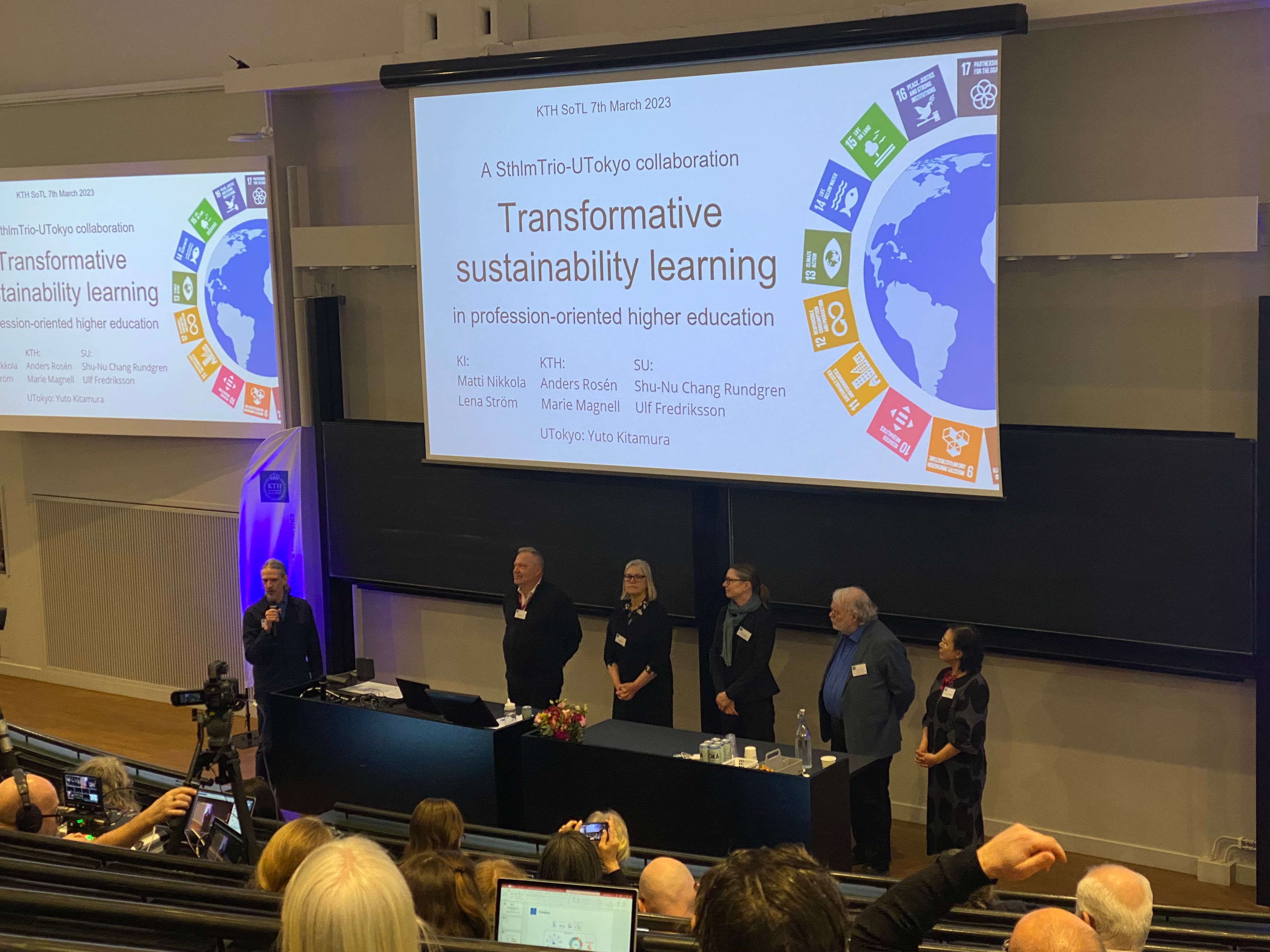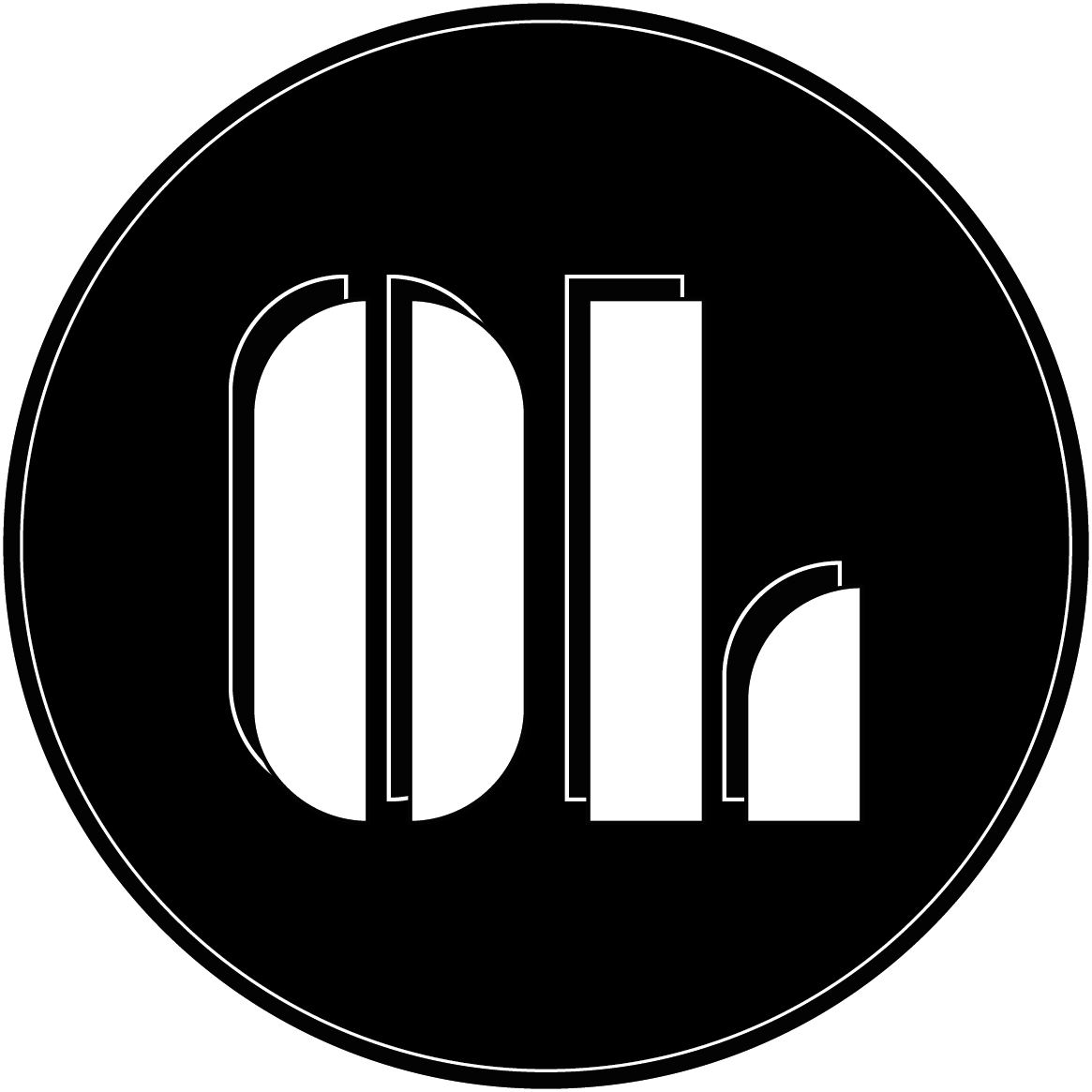SoTL 2023 - Future learning - Learning for the future
Jerren Gan - Authorjerren.gan@osqledaren.se
If you’ve walked past the banner outside Entré before 7th March, you’d undoubtedly have seen the letters SoTL displayed in large bold letters. But what do these letters mean? Was it another career fair? Was it another chapter event?? Was it important???
Photo: Rektor Anders Söderholm giving the introduction speech to start the seminar
On 7th March, the 5th KTH Scholarship of Teaching and Learning conference was held and this year, as part of the Stockholm Trio Alliance, invited individuals from both Stockholm University and Karolinska Institute to join in and share their expertise. While the title might make it sound like this was a conference purely for educators and administrators, the theme of the conference: “Future learning – Learning for the future” meant that many of the things covered were extremely pertinent to us students — after all, it is us that benefit from innovation in education and pedagogy.
But first, what is SoTL and what’s special about this year’s conference? To find out, Osqledaren spoke to Madeleine Tucker Smith, the project manager of SoTL:
“The main aim of the Scholarship of Teaching and Learning (SoTL) conference is to bring scholars, researchers, educators, students, professionals, and other groups interested in teaching and learning in higher education to share their theoretical knowledge, research findings and educational practices with their colleagues and academic community.
SoTL is an approach in which the teacher develops his or her teaching by scientific analyses of practice and student learning in the light of current knowledge about teaching and learning in Higher Education. Results and generated learning are shared with peers. This has become an invaluable forum for faculty and research professionals to interact and share new ideas, experiences and knowledge within teaching and Learning.
This year’s theme was “future learning”: what type of teaching do we intend for the future? what should be done to prepare our Higher Education Institutions for the future? In what ways can we achieve a balance of the new with the old?”
The conference started bright and early at 9 am with an introduction by Rektor Anders Söderholm. When interviewed, Maja Rosén, Chef för Utbildningsinflytande (Head of Educational Affairs) shared:
“As a student representative at a teaching conference like SoTL, you tend to listen a bit harder for which perspective lecturers and other KTH employees have when they reason. That is why I was very happy to hear our President Anders Söderholm use the phrase "Allt vi gör inom Framtidens utbildning görs för studenterna." (translation: Everything we do within the project Future Education is for the students). That sends a powerful message to the teachers at KTH.”
And after the introduction, the day was packed with numerous presentations, workshops, posters, round tables, and of course, lots of fika breaks for everyone to network and learn from each other.

Photo: Professor Joseph Siegel in his presentation about note-taking
As a participant, one of the interesting presentations I found myself in was the “Notetaking Performance: Accounting for Influential Factors in Teaching” presentation by Professor Joseph Siegel. While we often think of notetaking as an automatic process that happens during lectures and classes, Prof Siegel shared some research data that highlighted the common difficulties faced while students took notes:
- Identifying and selecting content
- Paraphrasing
- Keeping up with the teacher’s rate of speech
- Balancing multiple streams of input (especially when the presentation slides differ from what is being shared verbally)
And while most of the presentation was focused on helping educators make better teaching styles to suit a class’s notetaking style, he also shared some tips to help us students improve:
- Make metacognitive decisions before the class: the style of the notes, method of notetaking, and choice of tools (whether it is on a tablet, physical notebook, or laptop)
- Independent practice — take notes on your own time and review them to see if your method works
- Prepare pre-lecture (do readings, etc)
At the same time, being in a conference full of teachers and professors who explain and share their teaching pedagogy (like using the blackboard so that they are slow enough for students to take notes, making important slides that students should note down a different colour, etc.) reminded me that at the end of the day, these are individuals who are truly invested in helping us learn and be more prepared for the working world.

Photo: Keynote presentation with presenters from SU, KI, KTH and UTokyo
After a long day of activities, the conference ended with the endnote presentation “What Does the Future Hold? The Transformation of Engineering Education” by Professor Arnold Pears, the Head of the Department of Learning.
In his thought-provoking presentation, Prof Pears emphasised that universities cannot give up their physical campuses entirely in a rush to embrace virtual experiences and augmented reality, arguing that personalised learning and a rich social learning experience should be the goal of a university. He also highlighted how universities should move further towards the creation of authentic assessments (creative learning experiences and test knowledge in realistic situations) that are meaningful and intrinsically motivating while making the integration (and not rejection) of AI, ML, big data and learning analytical systems the focus of education in the future.
Regarding this endnote, Maja reflected:
“I do share his view of the campus being more than a place to learn. A part of our education can now take place digitally without a campus but the social life we get at the campus is not replaceable and it's priceless for a majority of us students. KTH have a big job cut out for them since they currently lose millions of Swedish crowns yearly on rent and renovation of the buildings. Still, students experience having a hard time finding good study places between scheduled education for themselves and for group projects. They are having serious discussions within KTH regarding the use of our buildings but the clock is ticking so it's time for them to implement their ideas and act on them, without compromising the quality of education for the students at KTH. Like I said, a hard task.”
With the conference all wrapped up, SoTL project manager Madeleine shared some closing thoughts with us:
“As hybrid learning and other forms of blended teaching suddenly took on a completely new and more prominent role within our Higher Education Institution after the pandemic, we thought it a great opportunity to use our newly developed hybrid classrooms at KTH Campus for our 2023 conference and to record the presentations for our authors and participants to watch after the event.
This year for the first time we invited our colleagues from Stockholm University and Karolinska Institute to contribute with their pedagogical ideas and be a part of the conference as part of the Stockholm Trio Alliance, so having the conference in a semi-hybrid format enabled a lot of the participants from these universities to attend online.
Conferences aren't just about the talks - they're also about the community and the people who take part in them. We had a great turnout both on-site and online. We hope that it enabled faculty, staff, and students to gain some new perspectives and knowledge.”
Publicerad: 2023-03-14



